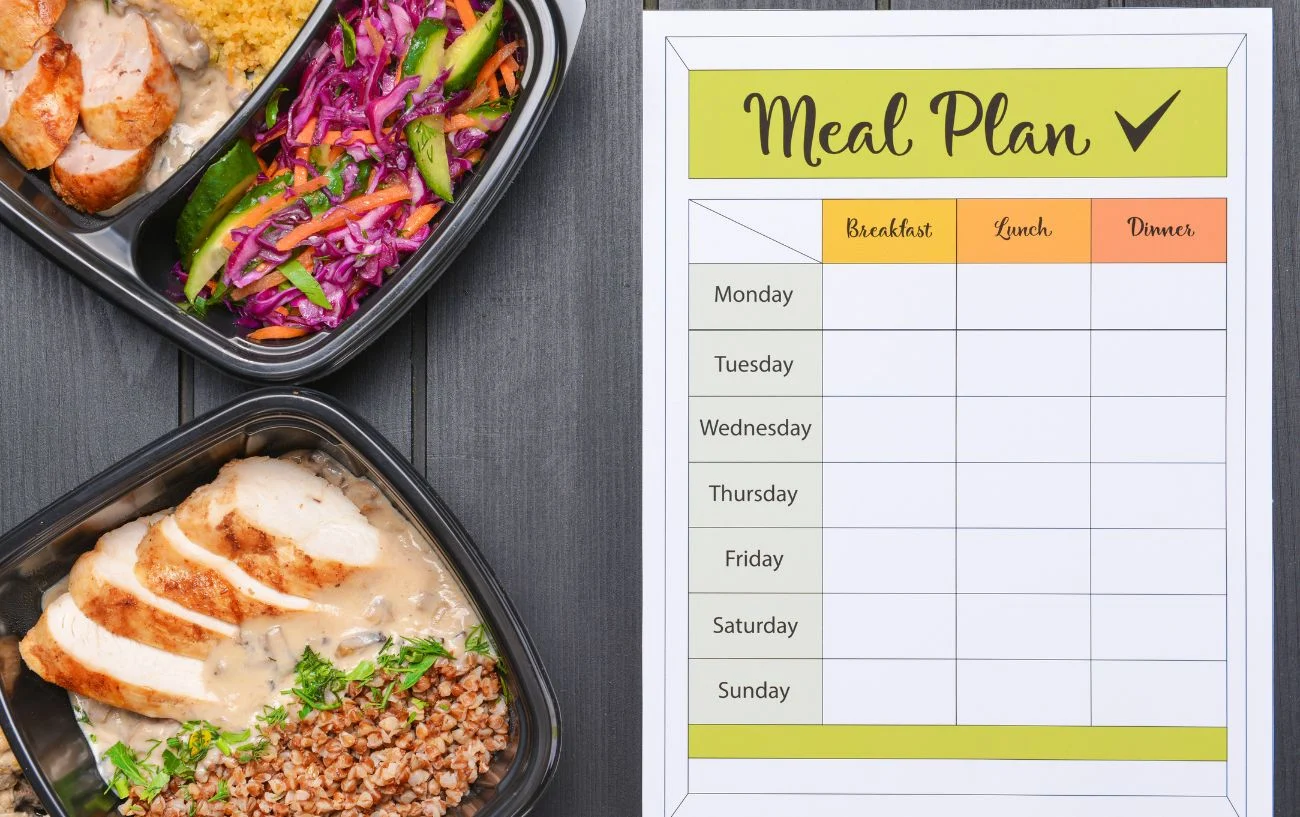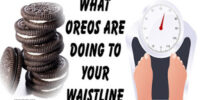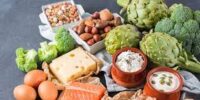Carb Cycling Meal Plan

Are you looking for a meal plan that will help you reach your fitness goals? Carb cycling may be the answer. Carb cycling involves alternating your carb intake throughout the week to maximize weight loss and muscle gain.
This article will explain what carb cycling is, how it works, and provide an example of a carb cycling meal plan so you can get started right away!
Carb Cycling meal plan for every day for 1 week
Day 1 (Low Carb Day)
- Breakfast: 3 scrambled eggs with 1/2 cup of sautéed spinach and 1/4 avocado
- Snack: 1/4 cup of almonds
- Lunch: Grilled chicken salad with mixed greens, cucumber, tomato, and olive oil vinaigrette
- Snack: 1 small apple with 1 tablespoon of almond butter
- Dinner: Grilled salmon with roasted asparagus and 1/2 cup of quinoa
Day 2 (Low Carb Day)
- Breakfast: Protein smoothie with 1 scoop of vanilla whey protein powder, 1 cup of unsweetened almond milk, 1/2 cup of frozen berries, and 1 tablespoon of almond butter
- Snack: 1/2 cup of sliced cucumbers with 2 tablespoons of hummus
- Lunch: Grilled chicken breast with roasted broccoli and 1/2 sweet potato
- Snack: 1/4 cup of cashews
- Dinner: Turkey burger with mixed greens, tomato, and avocado served with roasted Brussels sprouts
Day 3 (Low Carb Day)
- Breakfast: 2 scrambled eggs with 1/2 cup of sautéed mushrooms and 1/2 avocado
- Snack: 1/2 cup of sliced bell peppers with 2 tablespoons of guacamole
- Lunch: Grilled chicken salad with mixed greens, tomato, cucumber, and olive oil vinaigrette
- Snack: 1 small pear with 1 string cheese
- Dinner: Grilled shrimp with zucchini noodles and tomato sauce
Day 4 (High Carb Day)
- Breakfast: 1 cup of oatmeal with 1 sliced banana, 1 tablespoon of honey, and 1/4 cup of chopped nuts
- Snack: 1/2 cup of berries with 1/4 cup of Greek yogurt
- Lunch: Grilled chicken sandwich on whole-grain bread with lettuce, tomato, and avocado
- Snack: 1 small orange with 1/4 cup of cashews
- Dinner: Grilled sirloin steak with roasted sweet potato and steamed green beans
Day 5 (Low Carb Day)
- Breakfast: Protein smoothie with 1 scoop of chocolate whey protein powder, 1 cup of unsweetened almond milk, 1/2 cup of frozen berries, and 1 tablespoon of almond butter
- Snack: 1/4 cup of almonds
- Lunch: Grilled chicken breast with roasted Brussels sprouts and 1/2 cup of quinoa
- Snack: 1 small apple with 1 tablespoon of almond butter
- Dinner: Baked salmon with steamed broccoli and cauliflower rice
Day 6 (Low Carb Day)
- Breakfast: 3 scrambled eggs with 1/2 cup of sautéed spinach and 1/4 avocado
- Snack: 1/2 cup of sliced cucumbers with 2 tablespoons of hummus
- Lunch: Grilled chicken salad with mixed greens, cucumber, tomato, and olive oil vinaigrette
- Snack: 1/4 cup of cashews
- Dinner: Turkey burger with mixed greens, tomato, and avocado served with roasted asparagus
Day 7 (High Carb Day)
- Breakfast: 2 slices of whole-grain toast with 2 scrambled eggs and 1/2 avocado
- Snack: 1/2 cup of berries with 1/4 cup of Greek yogurt
- Lunch
Overview
Carb cycling is becoming more popular among people who are looking to lose weight or build muscle. It’s a great way to keep your body in balance and ensure that you’re getting the nutrients you need without overloading on carbs.
Eating carbohydrates helps give us energy and helps us feel full, but eating too many can lead to unwanted weight gain. With carb cycling, you eat fewer carbs some days and more carbs on others, allowing for better control over your diet.
By following a carb cycling meal plan, you can effectively manage your nutrition goals while still enjoying the foods that make life enjoyable. In this article, we’ll cover all the basics of carb cycling as well as an example of a carb cycling meal plan so you can get started right away!
Definition of Carb Cycling
Have you ever heard about carb cycling meal plans?
Carb cycling is a nutritional strategy that involves strategically changing your carbohydrate intake to reach a certain goal. It’s gaining popularity amongst athletes and fitness enthusiasts alike, as it can help them to achieve their goals faster.
Rhetorically speaking, the concept of carb cycling is simple: alternate high-carb days with low-carb days. On high-carb days, you consume more of your total calories in the form of carbohydrates; on low-carb days, you consume fewer carbs and more proteins and fats. By planning your meals around these alternating cycles, you can effectively fuel your body for optimal performance.
Carb cycling meal plans provide an easy way to stay consistent with this type of dietary approach. Instead of counting individual macronutrients or trying to calculate what your ideal daily caloric intake should be, all you have to do is follow the suggested meal plan. This eliminates any guesswork and makes following a carb cycling diet much easier.
Benefits Of Carb Cycling
Having a carb cycling meal plan has numerous benefits. Firstly, it can help you achieve your health and fitness goals. By alternating between high-carb and low-carb days, you can more easily regulate your calorie intake and adjust it to meet your needs. This helps to ensure that your progress isn’t hindered by an overly restrictive diet or one that is too relaxed.
In addition, the flexibility of a carb cycling meal plan allows you to enjoy foods from all food groups in moderation. You don’t have to worry about completely eliminating carbs from your diet as you would with other plans, or feel guilty for indulging every once in a while. This makes it easier to maintain a healthy lifestyle without feeling deprived or restricted.
Carb cycling also helps with weight control by preventing the body from adapting to one type of diet. The constant change keeps the metabolism working at its optimal level, allowing you to reach and maintain your desired weight more easily. It also helps keep hunger pangs at bay since the high-carb days provide more energy and satisfaction than low-carb ones do.
How To Start A Carb Cycling Diet
Starting a carb cycling diet can be a daunting task, but with the right knowledge and preparation, it doesn’t have to be. Preparing to begin a carb cycling diet requires planning and patience, but the payoff can be worth it. Here are some tips for getting started:
- Essential Knowledge
- Understand what carb cycling is
- Know macronutrients and how they work together in your body
- Learn which foods are considered “carbs” and which ones are not
- Planning Ahead
- Gather all the necessary ingredients before starting the diet
- Plan meals that are healthy and enjoyable
- Create a weekly meal plan that will fit your lifestyle
- Making Adjustments
- Monitor progress each week by tracking weight, measurements, and energy levels
- Adjust portions or food selections if needed to reach desired goals
- Make changes as needed to keep you motivated and on track
By following these steps, anyone can start a carb cycling diet with confidence. With the right understanding of how carbs affect the body, careful planning, and willingness to make adjustments when necessary, you can enjoy all the benefits of this eating style.
Macronutrient Ratios
Now that you understand the basics of carb cycling, it’s time to look at the macronutrient ratios. The ideal macronutrient ratio for a carb cycling diet would be 40-50% carbohydrates and 25-35% protein on high-carb days, and 10-20% carbohydrates and 40-50% protein on low-carb days. This ratio helps to ensure that your body is getting enough fuel during workouts while still maintaining an overall balanced diet.
It’s important to remember that there are no hard and fast rules when it comes to carb cycling. Everyone has different needs when it comes to their nutrition plan so adjust your ratios accordingly. For instance, if you do more intense exercise, you might need more carbs on your high days, or if you’re looking to lose weight quickly, you may want to reduce your carbs even further on low-carb days. Ultimately, it’s up to you to decide what works best for your goals and lifestyle.
Foods To Include And Avoid
It’s important to understand which foods you should include and avoid when carb cycling. Healthy carbohydrate sources such as fruits, vegetables, whole grains, dairy products and legumes should be included in your meal plan. On high-carb days, complex carbohydrates such as oats, quinoa, potatoes and brown rice are recommended. On low-carb days you can reduce your intake of these foods but still include some healthy carbohydrates such as sweet potatoes or a small serving of oats.
In addition to carbohydrates, it is important to include plenty of lean proteins and healthy fats in your meal plan. Lean proteins like chicken, fish and eggs are great sources of protein that should be included on both high-carb and low-carb days. Healthy fats from nuts, seeds and avocados can also be added for extra flavor and texture to meals. Avoid processed foods like white breads, pastries and candy on both high-carb and low-carb days. Eating these types of foods will not help you reach your goals any faster.
Sample Meal Plans
Now that you have an idea of which foods to include and avoid while carb cycling, it’s time to put together some sample meal plans. To get the most out of your carb cycling plan, make sure to spread out your meals evenly throughout the day and keep a balanced ratio of carbs, proteins, and fats in each one. On high-carb days, aim for 50-60% of your calories to come from carbs. On low-carb days, reduce this amount to about 20%. Here are two sample meal plans for high-carb and low-carb days:
High-Carb Day Meal Plan:
Breakfast: Oatmeal with raisins and banana slices
Snack: Trail mix with almonds and dried fruit
Lunch: Veggie wrap with hummus
Snack: Whole wheat toast with peanut butter
Dinner: Baked sweet potato with grilled chicken breast
Low-Carb Day Meal Plan:
Breakfast: Egg whites on a whole wheat English muffin
Snack: Greek yogurt with berries
Lunch: Turkey lettuce wraps with avocado slices
Snack: Celery sticks with almond butter
Dinner: Grilled salmon with steamed vegetables
Preparing Meals Ahead Of Time
Prepping meals ahead of time is a great way to save time and energy while following a carb cycling meal plan. There are a few tips to make sure you’re getting the most out of your meal prepping experience. The table below provides an overview of these tips:
| Tip | Explanation |
|---|---|
| Create a Schedule | Plan out when you’ll prep, cook, and store your food for easy access throughout the week. |
| Buy in Bulk | When purchasing ingredients for your recipes, choose ingredients that can be bought in bulk. This will save you money and give you enough to make multiple meals at once. |
| Use Containers Wisely | Investing in air-tight containers will help keep food fresh longer and save space. Make sure they are labeled with the contents and date so you know when to consume them. |
| Be Flexible with Recipes | Have back-up recipes in case something doesn’t turn out as expected or if an unexpected ingredient runs out mid-cooking process. This will help prevent any wasted ingredients or time. |
Meal prepping is an effective way to stay on track with your carb cycling diet without spending too much time in the kitchen each day. By following these tips, you’ll ensure that you have nutritious meals available throughout the week that fit within your diet plan!
Grocery Shopping Tips
Grocery shopping can be a daunting task, especially when trying to balance healthy eating with convenience and budget. To make it easier, there are certain tips you can follow that will help you shop smarter.
First and foremost, plan ahead. It’s much easier to stick to your desired food choices if you know what groceries you need before going into the store. Meal planning is a great way to ensure that you have all the items needed for your carb cycling diet without overspending or buying unnecessary items.
Next, make sure to read labels and check for added sugars as well as other unhealthy ingredients. Since carb cycling involves eating different amounts of carbohydrates on alternating days, it’s important to choose foods that are low in sugar but still provide the necessary macronutrients (protein, carbs, fats) needed for your meals.
Here are some tips that can help make grocery shopping easier:
- Make a list before heading out and stick to it – this helps avoid impulse buys
- Buy in bulk when possible – this helps save money in the long run
- Look for sales and coupons – these can help lower costs even further
- Try online grocery delivery – this eliminates time spent at stores or crowded marketplaces
- Invest in healthy snacks – having them on hand will prevent you from reaching for unhealthy options
By following these tips, you’ll be able to shop more efficiently while still adhering to the principles of carb cycling. With some planning and preparation ahead of time, grocery shopping can become an enjoyable experience rather than a chore!
Snacking Strategies
Snacking can be an important part of carb cycling. It’s a great way to manage hunger levels and keep your metabolism humming. Eating something every few hours can help avoid overeating later in the day. However, it’s important to choose snacks that are nutrient-dense and low in simple carbohydrates.
Here are some healthy snack ideas for carb cycling:
| Snack | Protein (g) | Carbs (g) |
|---|---|---|
| Hard-boiled eggs | 6g | 1g |
| Walnuts and almonds | 4g | 3g |
| Greek yogurt with berries or granola | 14g | 15g |
| Hummus with veggies or whole wheat crackers | 5g | 10g |
These snacks help provide balanced nutrition and will help keep you energized throughout the day. They also provide a convenient way to get some extra protein and fiber into your diet without having to cook a meal. So don’t forget to incorporate snacking into your carb cycling meal plan!
Exercise Routines For Carb Cycling
Moving on from snacking strategies, exercise routines are an important part of carb cycling. The goal of exercise while carb cycling is to maximize fat loss while preserving muscle mass.
To achieve this, the best course of action is to alternate between high intensity exercises and low intensity exercises. On high carb days, HIIT (high intensity interval training) should be done as it will help with burning fat and building muscle. On low carb days, the focus should be on endurance activities like jogging or cycling to burn fat and keep muscles active.
It’s important to note that different people need different levels of exercise depending on their goals and body type. Therefore, it’s best to consult a trainer or dietician who can offer advice tailored to an individual’s needs. With the right combination of exercise and dietary modifications, anyone can reach their fitness goals by following a carb cycling plan.
Sticking With The Plan Long-Term
Sticking with a carb cycling meal plan long-term takes consistency and dedication. Picture yourself in the kitchen, surrounded by fresh produce and ingredients that you need to make your meals for the week. This can be daunting at first, especially if you’re new to meal prepping. You’ll need to set aside time each week to plan out what meals to make, shop for the ingredients, and cook them. It will take some getting used to but it’ll become easier over time.
Once you get into a routine of meal prepping every week, it will become second nature. You’ll find yourself looking forward to planning out your meals and trying new recipes with different ingredients. Staying consistent with your carb cycling meal plan is key for seeing results. So don’t give up when times get tough; stay dedicated and motivated! With a little patience and effort, you’ll be able to reap all the benefits of following a healthy diet plan.
Common Mistakes To Avoid
Now that you have a plan in place to help you stick with carb cycling long-term, it’s important to recognize the potential pitfalls and common mistakes people can make when beginning a new diet. Here are some of the most common mistakes to avoid when starting carb cycling.
First, don’t think of carb cycling as an extreme diet change. It is important to remember that carb cycling is not a crash diet or an all-or-nothing approach. When done correctly, it should provide sustainable lifestyle changes that are easy to maintain over time.
Secondly, be sure to plan your meals and snacks in advance so that you don’t get caught up in unhealthy habits like skipping meals or indulging in too many unhealthy snacks. Planning ahead will also ensure that your meals are balanced and provide the nutrition you need for optimal health.
Finally, try not to compare yourself to others who may be following different diets or eating regimens. Everyone’s body responds differently and there is no one size fits all approach when it comes to carb cycling or any other diet for that matter. Focus on what works best for you and strive for consistency rather than perfection.
Frequently Asked Questions
How Often Should I Cycle My Carbs?
Using the technique of allegory, imagine if every day you took a journey. Each day, the terrain is different, and you have to adjust your plan accordingly. You can’t simply take the same route each and every day – you need to be flexible and able to switch up your approach. The same goes for carb cycling; it’s important to cycle your carbs in order to get the most out of your diet.
So how often should you cycle your carbs? Here’s a 3-item numeric list of what we recommend:
- Cycle every 2-3 days
- Eat high-carb on one or two days per week
- Have low-carb or no-carb days during other parts of the week
Carb cycling is beneficial because it helps prevent your body from getting used to eating the same amount of carbohydrates each day. By changing up your carb intake, you’re forcing your body to adapt and use more energy when digesting food. This means that you’ll burn more calories throughout the day – leading to better weight loss results! Additionally, by varying your carb intake, you will experience improved energy levels and overall health benefits. So don’t be afraid to switch things up with carb cycling – it could just be the key to reaching your fitness goals!
What Foods Should I Eat On High-Carb Days?
When it comes to carb cycling, there are two types of days: high-carb and low-carb. On high-carb days, it’s important to choose the right foods in order to get the most out of your meal plan. Here are some great options for when you’re in a high-carb cycle:
- Whole Grains: Brown rice, quinoa, oats, barley, and bulgur
- Fruit: Bananas, apples, oranges, strawberries and blueberries
- Starchy Vegetables: Potatoes, sweet potatoes, squash and yams
- Legumes: Lentils, chickpeas, black beans and kidney beans
These starchy carbohydrates will give your body the energy it needs for workouts and other activities. Additionally, these foods have plenty of vitamins and minerals that can help you stay healthy during your carb cycling journey. Plus they provide fiber which aids in digestion and helps reduce cravings.
By choosing these nutrient dense foods on your high-carb days you can ensure that you fuel your body with the energy required for an active lifestyle while also providing essential nutrients needed for good health. So don’t forget to incorporate these items into your diet when you’re planning meals for a high-carb day!
Are There Any Health Risks Associated With Carb Cycling?
Recent research suggests that 1 in 3 people are attempting to improve their health through diet and nutrition. Carb cycling is one such approach, where a person alternates between high- and low-carb days. But is this way of eating really safe? Are there any health risks associated with carb cycling?
When done correctly, carb cycling can provide numerous health benefits. For example, it can help sustain energy levels throughout the day and optimize fat burning. However, if done incorrectly, it may lead to nutrient deficiencies or imbalances in electrolytes. Furthermore, following an extreme low-carb diet over time could also lead to increased risk of heart disease due to elevated cholesterol levels.
Therefore, it’s important that those considering carb cycling do so responsibly and under the supervision of a qualified healthcare professional. Before beginning a new diet plan, individuals should ensure they have a balanced nutritional intake from all food groups and get adequate amounts of micronutrients like vitamins and minerals in their diet as well.
Can I Combine Carb Cycling With Intermittent Fasting?
Combining carb cycling with intermittent fasting can be a great way to achieve weight loss and optimize health. Both practices have proven to be effective on their own, but there are a few things you need to consider before combining them. Here are three key points to consider:
- Flexibility: Intermittent fasting requires strict adherence to specific eating windows, while carb cycling allows for more flexibility in your meal plan. If you find it difficult to stick to a single meal pattern, carb cycling may be a better fit for you.
- Nutritional Needs: When you’re combining carb cycling with intermittent fasting, make sure you’re getting the nutrients your body needs from the foods you eat. It can be helpful to work with a nutritionist or dietitian to ensure that your meals are balanced and meet all of your nutritional needs.
- Timing: Intermittent fasting typically begins after 8-12 hours of no food intake, so it’s important to plan when you will have your larger meals during the day when using this combined approach. This will help ensure that you get enough calories and nutrients throughout the day while still adhering to your intermittent fasting schedule.
When used together correctly, carb cycling and intermittent fasting can be an effective way to reach your health goals – whether that’s weight loss or just overall wellness. However, it’s important to understand how these two approaches work together and make sure they’re right for you before jumping into them both at once.
How Long Does It Typically Take To See Results From Carb Cycling?
Believe it or not, carb cycling can bring about extraordinary results in no time at all! It’s an incredible way to make strides toward your fitness goals and see tangible progress in mere weeks. But how long does it typically take to see the benefits of carb cycling?
In most cases, the answer is quite simple: you should begin to feel noticeable improvements within a couple of weeks. That doesn’t mean that you’ll be entirely finished with your dieting journey; far from it! You’ll still need to work hard and stay dedicated to see the full effects from this type of meal plan. But, if you stick with it, you should start seeing tangible changes in as little as two weeks!
Carb cycling is an effective and powerful tool for burning fat and building muscle. With dedication and consistency, you can successfully reach your fitness goals and step into a new body in a relatively short amount of time. All it takes is some commitment and devotion, so don’t give up on yourself just yet – there are great things ahead!
Conclusion
I’m sure by now you’ve realized that carb cycling can be a great way to reach your health and fitness goals. To summarize, carb cycling means alternating between days of high-carbohydrate intake and low-carbohydrate intake. When done properly, this approach can help you lose weight, gain muscle mass, or maintain your current weight.
However, it’s important to remember that the key to successful carb cycling is consistency. You should aim for the same number of high-carb days as low-carb days each week, and stick with your plan for at least a few weeks before making any adjustments. Additionally, it’s important to understand any potential risks associated with carb cycling before beginning the process.
By taking the time to create an effective meal plan and familiarizing yourself with the basics of carb cycling, you’ll be able to make informed decisions about what works best for your body on both a physical and mental level. And even if results take some time to show up on the scale or in photos – don’t forget that Rome wasn’t built in a day! So keep at it; I’m sure you’ll reap the rewards in no time.










